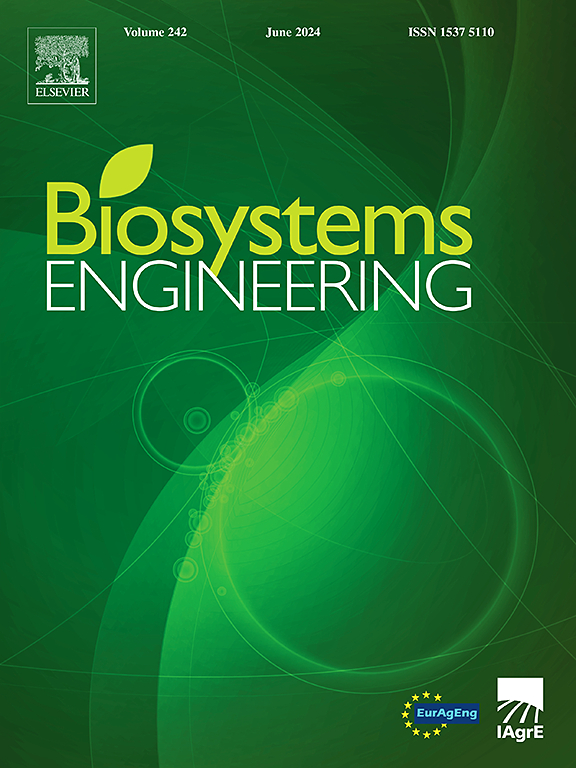Study on the interaction mechanism between stubble-breaking blades and unidirectional maize root-soil composites
IF 5.3
1区 农林科学
Q1 AGRICULTURAL ENGINEERING
引用次数: 0
Abstract
A high-performance stubble-breaking operation is an important guarantee for the quality of no-till operations, and studying the interaction between blades and root-soil composites is a key foundation for improving the performance of stubble-breaking devices. Therefore, a model was developed to predict the cutting force of the blade and the dragging distance of the root for cutting maize root-soil composites. This model was validated through cutting experiments of reshaped and undisturbed maize root-soil composites, and was used to study the influence of key factors on cutting. The verification test results indicated that the model was accurate (error<20%), efficient (1.86 s), and general. Based on the model, the interaction was described as follows: (a) The root tensile force, which is generated by the dragging of the root, increased the resistance of the blade; (b) Once the root-soil interface fails, the root is difficult to break; (c) A higher soil foundation modulus prevents roots from being dragged and also leads to a higher cutting force; (d) As the number of roots per unit volume increases, the stubble-breaking resistance also increases; (e) The cutting force of cutting root-soil composites with thick roots or densely distributed fine roots is higher. In summary, to reduce stubble-breaking resistance, suitable field conditions should be selected, a large number of roots should be avoid distributing on the blade cutting path, and the root dragging distance should be shortened. This study revealed the blade-root-soil interaction mechanism, providing a theoretical basis for the design and optimisation of stubble-breaking devices.

玉米断茬叶片与单向根-土复合材料相互作用机理研究
高效的除茬作业是免耕作业质量的重要保证,研究叶片与根土复合材料的相互作用是提高除茬装置性能的重要基础。为此,建立了玉米根土复合材料切割时叶片切削力和根系拖拽距离的预测模型。通过改造后和原状玉米根土复合材料扦插试验对该模型进行了验证,并利用该模型研究了关键因素对扦插的影响。验证试验结果表明,该模型精度高(误差20%),效率高(1.86 s),通用性强。基于该模型,相互作用描述为:(a)根部的拉力,由根部的拖曳产生,增加了叶片的阻力;(b)根-土界面一旦失效,根难以断裂;(c)较高的土壤基础模量可以防止根系被拖拽,也会导致较高的切削力;(d)随着单位体积根数的增加,断茬阻力也增加;(e)根粗或细根密集分布的根-土复合材料的切削力更高。综上所述,为减少断茬阻力,应选择适宜的田间条件,避免大量根系分布在叶片切割路径上,缩短根系拖拽距离。本研究揭示了叶片-根-土相互作用机理,为除茬装置的设计与优化提供了理论依据。
本文章由计算机程序翻译,如有差异,请以英文原文为准。
求助全文
约1分钟内获得全文
求助全文
来源期刊

Biosystems Engineering
农林科学-农业工程
CiteScore
10.60
自引率
7.80%
发文量
239
审稿时长
53 days
期刊介绍:
Biosystems Engineering publishes research in engineering and the physical sciences that represent advances in understanding or modelling of the performance of biological systems for sustainable developments in land use and the environment, agriculture and amenity, bioproduction processes and the food chain. The subject matter of the journal reflects the wide range and interdisciplinary nature of research in engineering for biological systems.
 求助内容:
求助内容: 应助结果提醒方式:
应助结果提醒方式:


